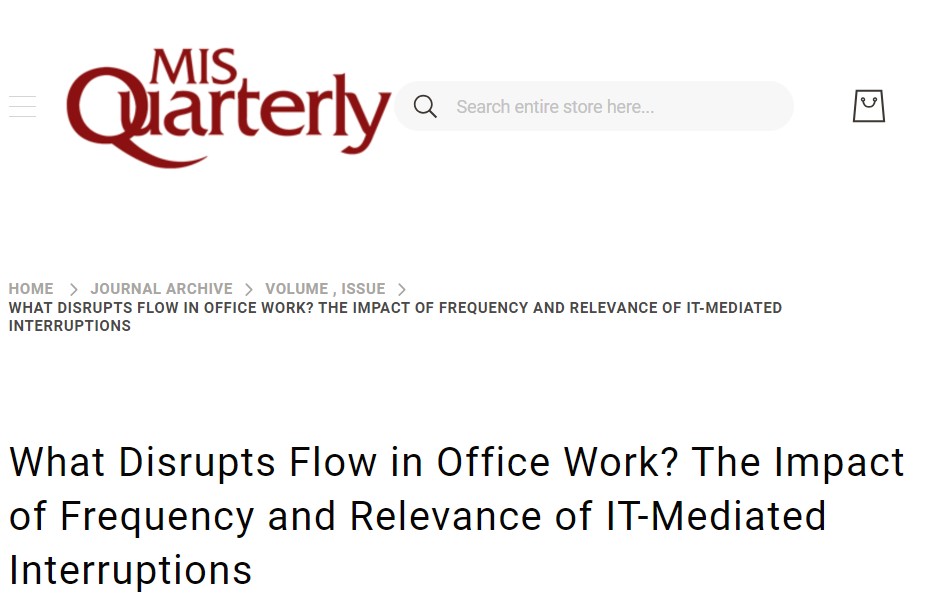
Forthcoming Publication in MISQ: What Disrupts Flow in Office Work? A NeuroIS Study on the Impact of Frequency and Relevance of IT-Mediated Interruptions
- Date: 10.08.2023
-
The MIS Quarterly has announced the paper co-authored by Mario Nadj, Raphael Rissler, Marc T. P. Adam, Michael T. Knierim, Maximilian X. Li, Alexander Maedche, and René Riedl as forthcoming publication. The paper describes results from a NeuroIS laboratory experiment focusing on a typical office work task while manipulating interruption frequency (low, high) and content relevance (irrelevant, relevant). We study the impact of interruptions on self-reported flow, its dimensions, and high-frequency heart rate variability as and ultimately perceived and objective task performance.
Further information is available on: https://misq.umn.edu/what-disrupts-flow-in-office-work-the-impact-of-frequency-and-relevance-of-it-mediated-interruptions.html
Title: Forthcoming Publication in MISQ: What Disrupts Flow in Office Work? A NeuroIS Study on the Impact of Frequency and Relevance of IT-Mediated Interruptions
Authors: Mario Nadj, Raphael Rissler, Marc T. P. Adam, Michael T. Knierim, Maximilian X. Li, Alexander Maedche, and René Riedl
Abstract: Flow, the holistic sensation people experience when they act with total involvement, is a known driver for desired work outcomes like task performance. However, the increasing ubiquity of IT at work can disrupt employees’ flow. Thus, the impact of IT-mediated interruptions on flow warrants more attention in research and practice. We conducted a NeuroIS laboratory experiment focusing on a typical office work task – an invoice matching task (i.e., matching customer payments to invoices). We manipulated interruption frequency (low, high) and content relevance (irrelevant, relevant) to study the impact of interruptions on self-reported flow, its dimensions, and high-frequency heart rate variability (HF-HRV; calculated from electrocardiography recordings) as a proxy for parasympathetic nervous system (PNS) activation. We found that content relevance moderated the relationship between interruption frequency and self-reported flow and that these results vary along flow dimensions. Content relevance also moderated the relationship between interruption frequency and PNS activation. Furthermore, self-reported flow was positively associated with both perceived and objective task performance, while PNS activation was not related to either performance measure. Lastly, we found no relationship between PNS activation (measured by HF-HRV) and self-reported flow, contributing to an important debate in the NeuroIS literature on whether physiological evidence constitutes an alternative or a complement to self-reports. Overall, our findings indicate that frequent interruptions are not harmful per se. Rather, considering content relevance is critical for a more comprehensive understanding of the effects on self-reported flow, its dimensions, and the underlying physiology.

